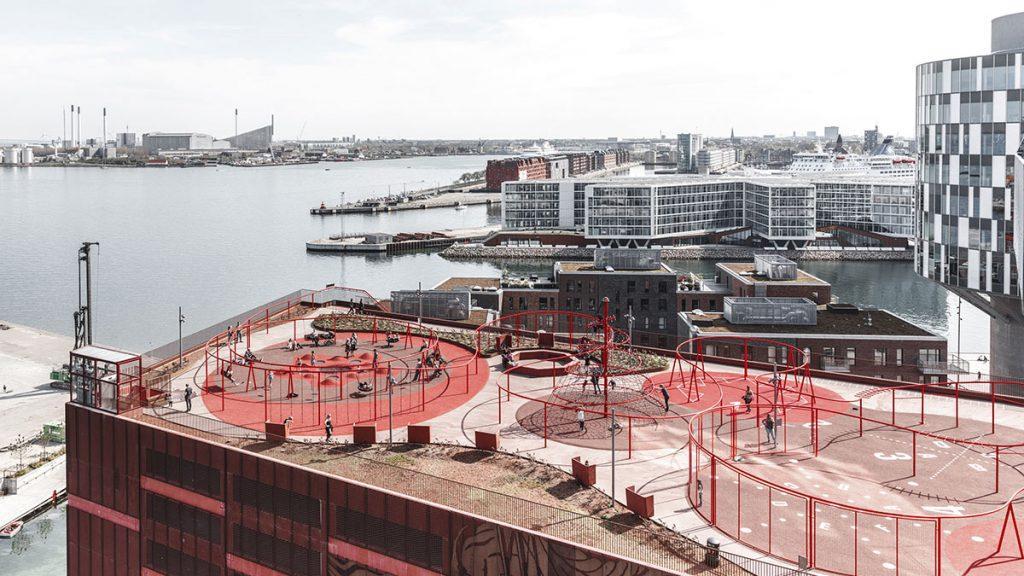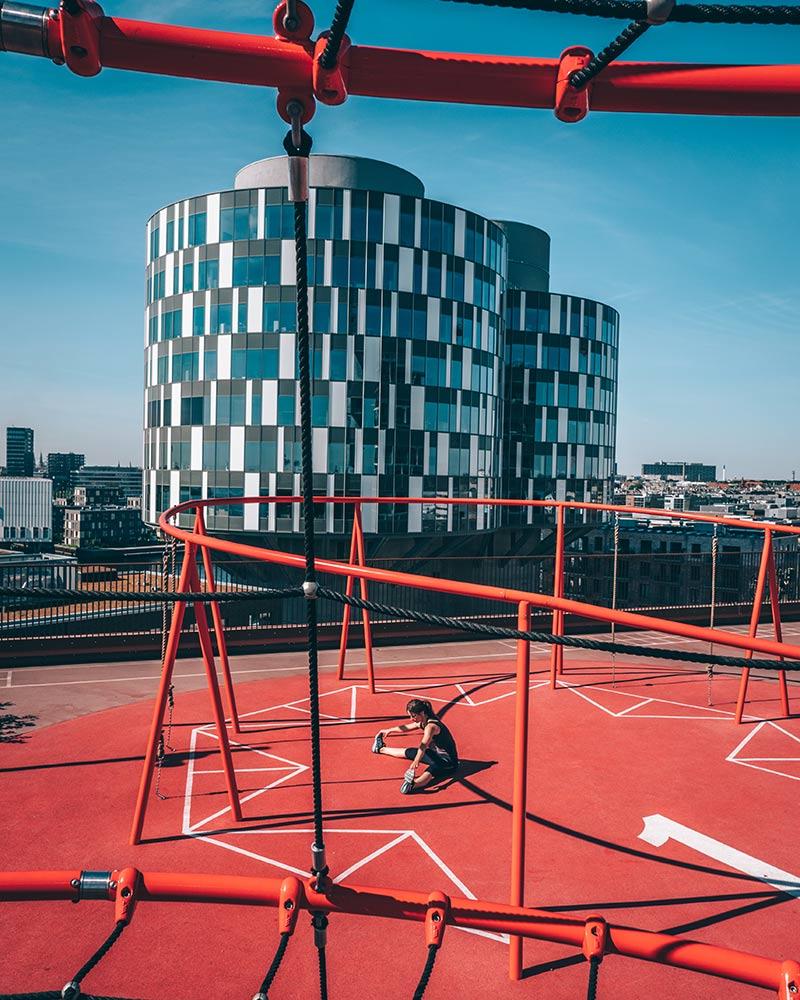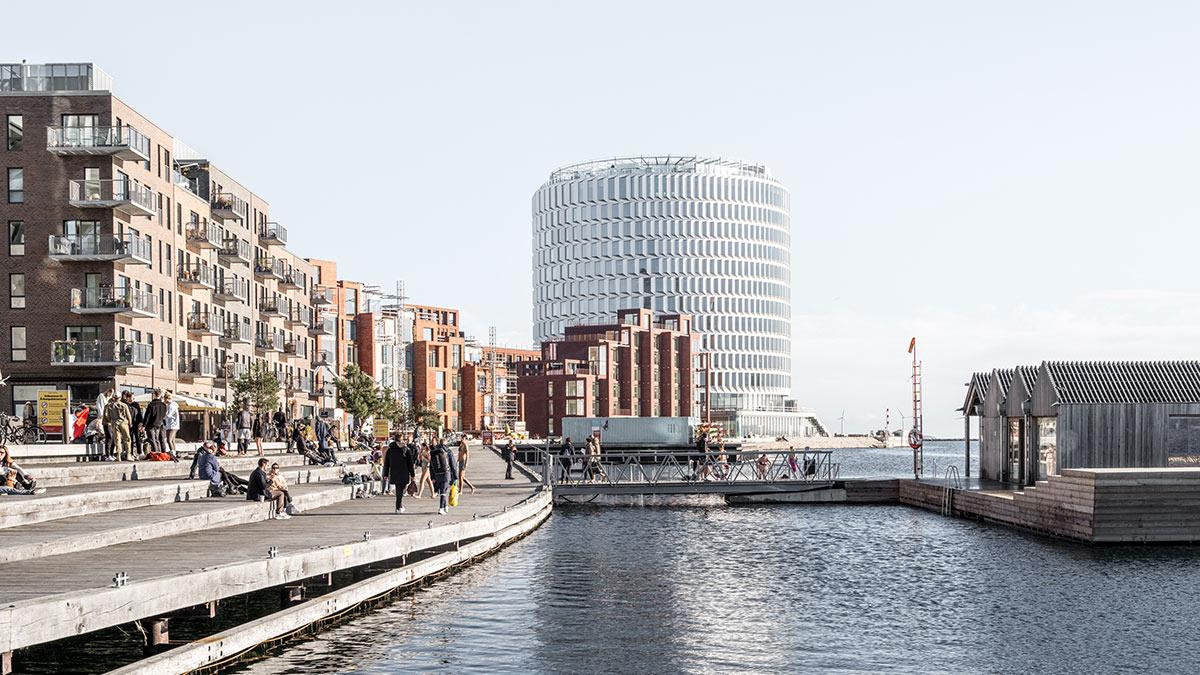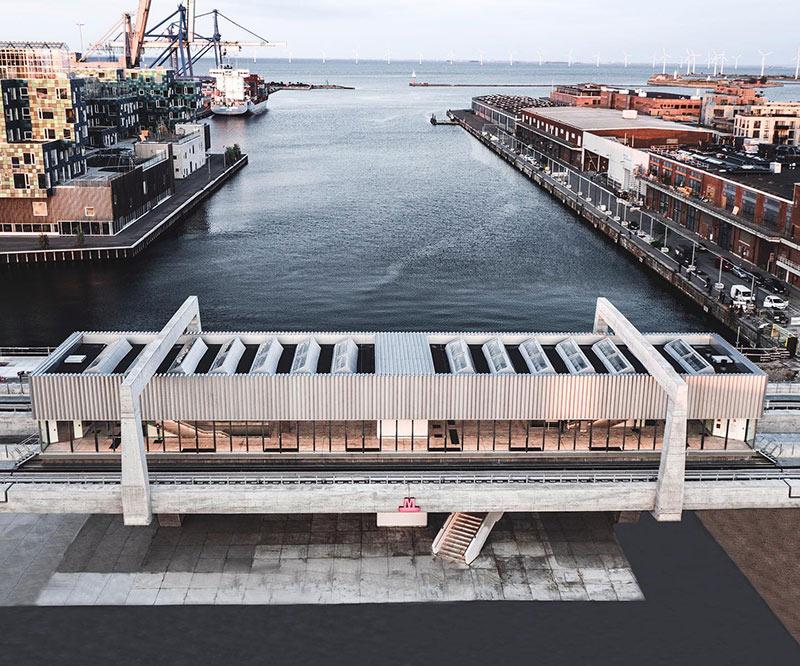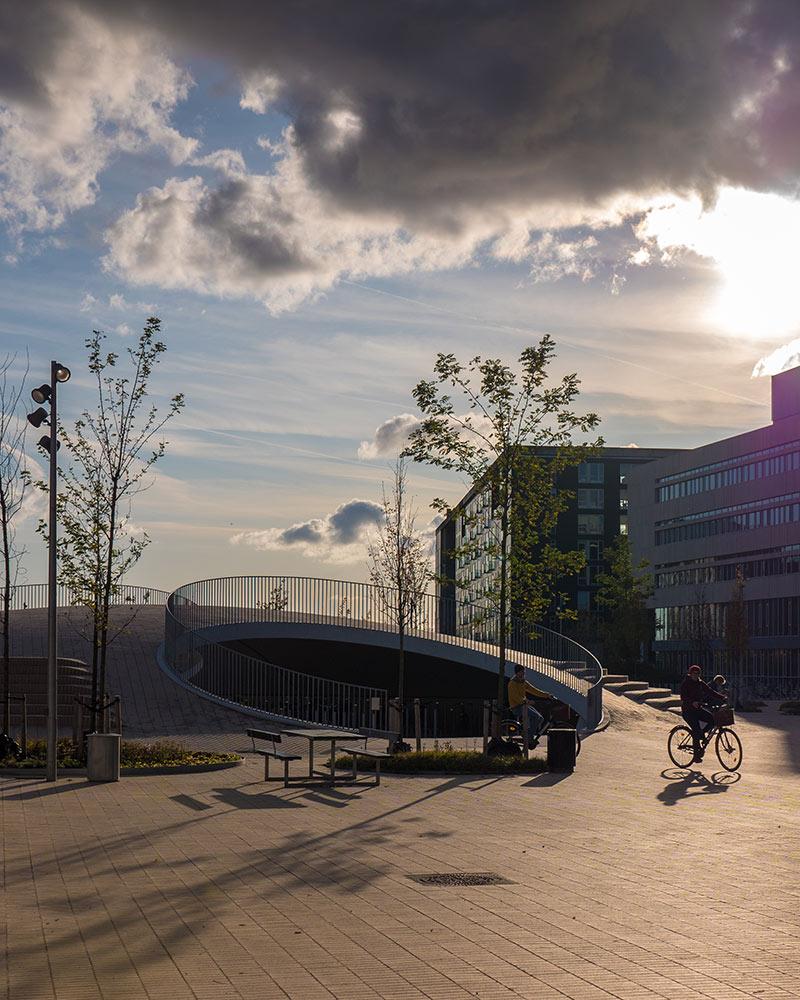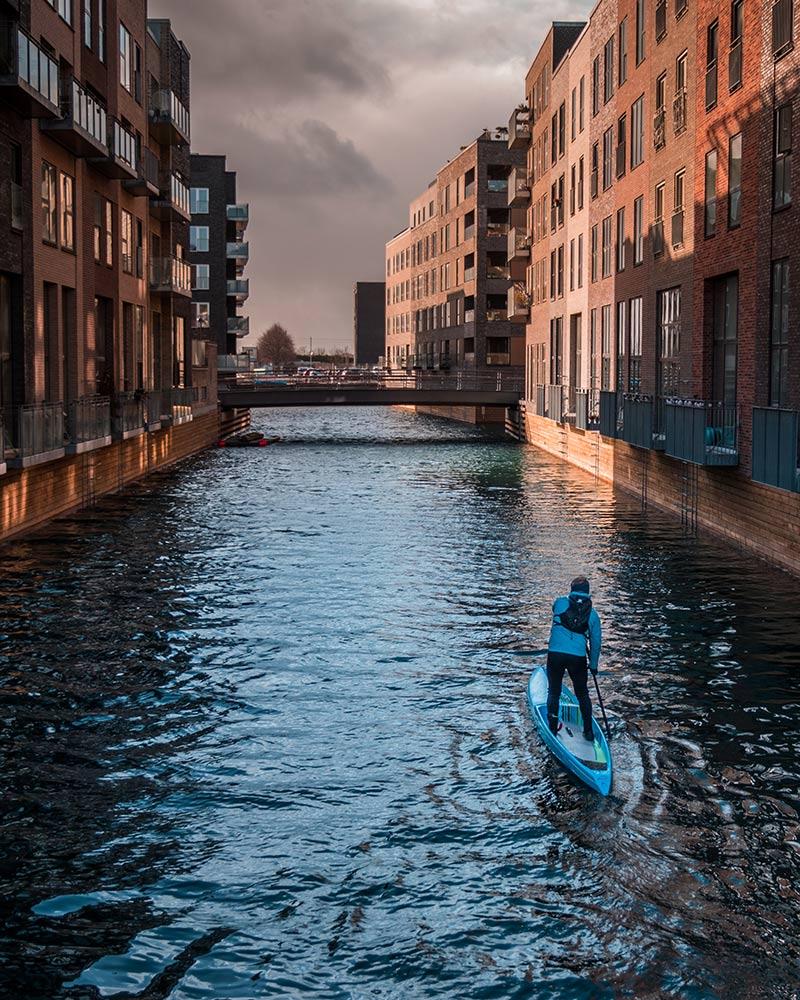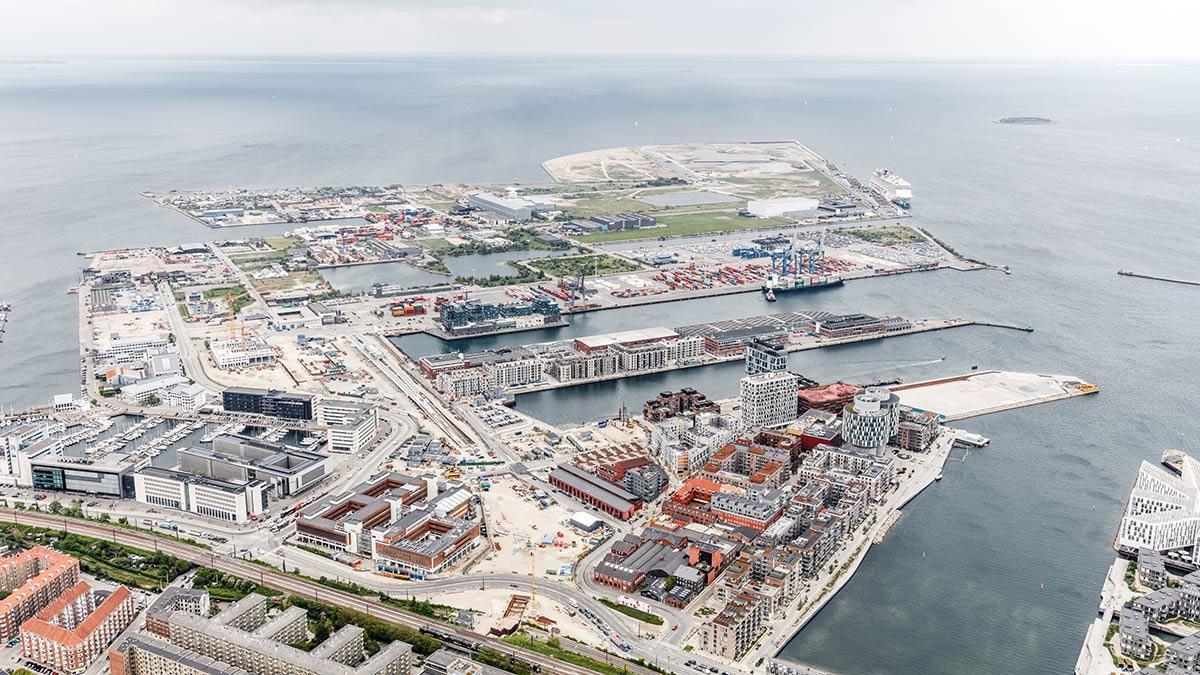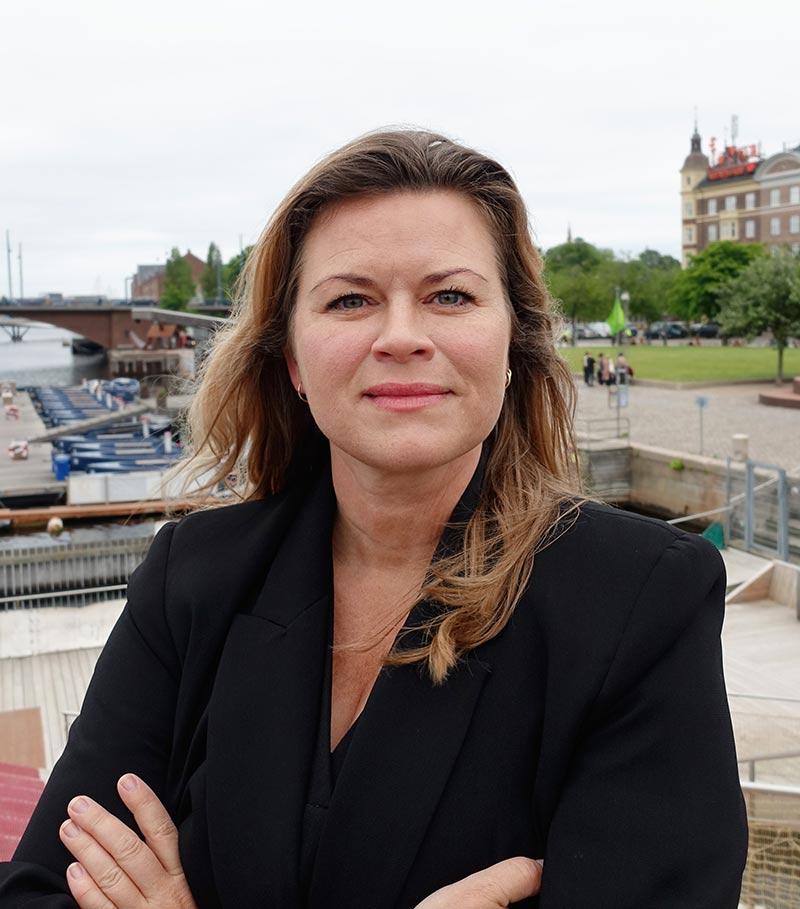Copenhagen as the world’s first net-zero capital city
Copenhagen is fast approaching its goal of achieving carbon neutrality. Its former city architect Camilla van Deurs, recently appointed head of the Nordic Office of Architecture’s new specialist area for strategic urban development, spoke to ubm magazine. about the biggest levers for reducing carbon emissions.
It is 8 a.m. on a Sunday in Copenhagen. On the roof of multi-storey car park Konditaget Lüders, overlooking the new urban neighbourhood Nordhavn and the Øresund, a group of athletes is being put through their paces with some demanding strength training, including innumerable variants of sit-ups, pistol squats and lunges. Next on the agenda are several laps of the fitness circuit, followed by a run down to the bottom of the building and up again, before their training finishes at the new sauna cabins down by the water. There is scarcely a car to be seen on the streets in-between, and it’s the same scenario on weekdays. A large solar battery housed in the car park designed by architectural firm JaJa Architects is part of the sustainable energy concept for Nordhavn, which is Denmark’s first urban neighbourhood to be awarded the Platinum seal from the German Sustainable Building Council (DGNB).
Copenhagen is hitting the home stretch on its route to net zero, and it will soon be the world’s first climate-neutral capital city. We asked Camilla van Deurs why decarbonization is so successful in the city.
The multi-storey car park Konditaget Lüders is far more than just a place for cars. What is the fundamental concept behind not just the car park but also the new neighbourhood Nordhavn as a whole?
CAMILLA VAN DEURS: The objective for Nordhavn, just like all of the city’s other districts, is to try to continually refine the art of urban building. Every time a new area of the city is developed, we learn from the previous project and see what can be done even better. In Nordhavn, the surrounding urban space is highly complex and so the urban development has been based on a number of specifications.
The master plan from 2008 included the district functioning as an energy lab, as a pilot experiment focusing on how to produce green electricity in cities. For the first time, there was a specification for the precise number of PV panels on a roof, and the suggestion was made to install a large storage unit for solar power in the multi-storey car park. We also learned from other areas of the city that we have to plan parking on a much more centralized level.
A neighbourhood near the south harbour showed that underground car parks beneath apartment blocks reduced the amount of people in public spaces, while at the same time many parking spaces remained empty and areas that were built on were unused. For this reason, in Nordhavn we wanted to create an urban fabric that was as dense as possible. In order to achieve this, we had to give every piece of built-on land more than just one function, and sometimes there are even up to three or four. And so this multi-use, plus the aim of breathing life into public spaces, were at the centre of urban planning. The concept behind the multi-storey car park Konditaget Lüders puts this in a nutshell.
In Nordhavn you can feel quite distinctly that urban mobility is changing fundamentally. There are hardly any cars on the roads, nor any parking spaces. Is the city of the future car-free?
Yes, definitely. Or at least with only a very small number of cars. In future there will be more car sharing and electric vehicles, but in Copenhagen all new urban developments are focused around the metro and the network of cycling highways that makes everything reachable for the people who live here.
We are slowly beginning to understand that quality of life is not dependent on owning a car that takes us shopping or to work. We have seen that this results in empty streets and empty cities. If you park outside your house, it’s possible that you won’t meet anyone, not even your neighbour. And that is not the kind of neighbourhood we want in our cities. We want cities that are vibrant, filled with residents, and – because you meet people on the streets – safe as well.
We are slowly beginning to understand that quality of life is not dependent on owning a car that takes us shopping or to work. We have seen that this results in empty streets and empty cities.
Camilla van Deurs, Copenhagen city architect (until June 2024)
Even though Copenhagen will just fall short of reaching climate neutrality by 2025, the city continues to lead the way when it comes to decarbonization. What advice can you give other cities here?
It is true that Copenhagen is expecting to almost reach climate neutrality in 2025. This success is due to a very long-term strategy that actually originated back in the 1970s when the energy crisis caused us to think seriously about the stability of energy prices. At the time, work was begun to systematically expand public transport in the local area and also the bicycle network. Since the 1990s, efforts have been stepped up to increase the production of green electricity and reduce consumption, which are the greatest contributors to saving carbon emissions. In other words, something like that cannot be changed overnight. And the war in Ukraine has made us all realize what energy supplies mean for a city.
In the beginning, the goal of becoming climate-neutral sounded like a journey to Mars, but without that ambition and the continual carbon monitoring we would not be in this position today.
Camilla van Deurs, Copenhagen city architect (until June 2024)
What role is played by decarbonization in the construction sector?
There is major leverage for CO₂ emissions in the construction sector, ranging from the type of building materials through to transporting and reusing them. The measures also include seeing where more of the city’s buildings can be made out of wood. As far as existing buildings are concerned, we are still far from being carbon neutral. That’s the next climate goal: Copenhagen is planning to become climate-positive by 2035. In other words, we are working towards a greater reduction in CO₂ than the amount of CO₂ being produced. But we will never manage that in the construction sector. We can reduce emissions, but we will not become climate-positive there. The big savings will be happening elsewhere.
Where exactly?
From planting trees and in the energy sector, but we naturally have a responsibility to restrict emissions as far as possible in connection with construction as well. For many years, the city of Copenhagen has been obliged to present a carbon footprint for every single decision – whether that’s buying nappies for childcare facilities or building the metro. And so those responsible for making political decisions are at least aware of the carbon emissions that result from their undertakings. In the beginning, the goal of becoming climate-neutral sounded like a journey to Mars, but without that ambition and the continual carbon monitoring we would not be in this position today.
Interview: Gertraud Gerst
Translation: Rosemary Bridger-Lippe
Photos: WonderfulCopenhagen, Filip Hucko, Rasmus Hjortshøj , Hufton & Crow, Daniel Rasmussen
